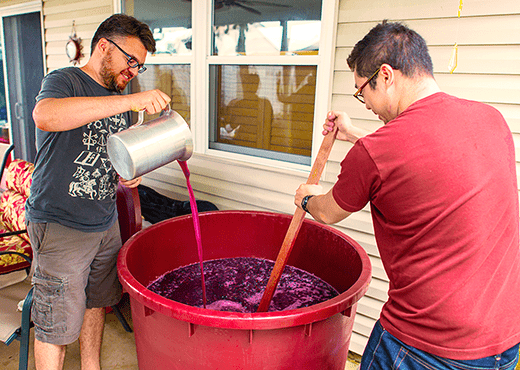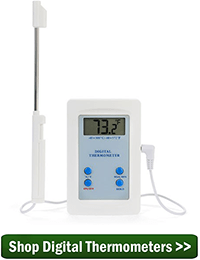 How do you add the yeast and yeast nutrients to the wine juice? Do you pour it on top and leave it be or do you mix/stir it in? This is for the primary fermentation.
How do you add the yeast and yeast nutrients to the wine juice? Do you pour it on top and leave it be or do you mix/stir it in? This is for the primary fermentation.
Daniel — CA
—–
Hello Daniel,
Thanks for the great question. Adding wine making ingredients to a batch of wine is something that can be taken for granted, but there is good way to do it, and a not-so-good way to do it.
In general, it’s a good idea to dissolve any winemaking ingredients in a little bit of the wine before adding it to the entire batch. This includes both the wine yeast and yeast nutrient.
Having said this, I can tell you that I am guilty of not following my own advice. I have often added acid blend, nutrients, tannin and other wine making ingredients directly to whole batch and then stirred to dissolve them.
How we like to go about adding wine making ingredients wouldn’t make much difference one way or the other except that when you add these ingredient directly, you are never 100% sure that they are getting completely dissolve. My guess is they usually are — at least with some time — but this is only a guess on my part. For this reason I would play it safe and pre-dissolve the wine making ingredients in a little sample then blend that back into the batch.
As for adding wine yeast to a batch of wine, there are some different opinions. Even the directions on the packets of dried wine yeast say to do something different than dissolving it into some of the wine must. So why do I differ?
 Wine yeast directions typically say to put the yeast into warm water, at a specific temperature, for a specific length of time. This is to re-hydrate the wine yeast… to wake it up, so to speak. Even if these directions are being followed exactly, a portion of the wine yeast is being killed, but not nearly enough to cause the fermentation to fail. When these directions are not being followed precisely, a very large number of the yeast cells can be killed — even all of them.
Wine yeast directions typically say to put the yeast into warm water, at a specific temperature, for a specific length of time. This is to re-hydrate the wine yeast… to wake it up, so to speak. Even if these directions are being followed exactly, a portion of the wine yeast is being killed, but not nearly enough to cause the fermentation to fail. When these directions are not being followed precisely, a very large number of the yeast cells can be killed — even all of them.
I have discovered over the years that many home winemakers do not follow these directions precisely. The water temperature is not checked and the length of time is not timed. Sometimes the yeast is left sitting on the counter until completely cooled, when it should have been at that temperature for maybe 10 minutes. The result is dead yeast and a failed fermentation. Every minute the yeast remain at that high temperature, more yeast cells are dying. For every degree higher then the temperature specified, more yeast cells are dying. So as you may be starting to see, there are pro’s and con’s to using either method of adding wine making yeast.
When you add dried wine yeast to a little wine at room-temperature you do not have all these risks. The wine yeast will not take off quite as fast as if it had been re-hydrated per directions, but usually we are talking only a few hours. Some of the yeast cells will die using this method because of cell wall damage, but not anything even close to the extent as if the yeast were over-heated.
For these reasons, I suggest dissolving the dried wine yeast in wine must. Unless you’re actually planning on taking the waters temperature and timing the length of time the yeast spend at that temperature, this is usually your best option.
Daniel, I hope this answers your question about adding wine making ingredients. Just make sure you pre-dissolve everything and you should be good to go!
Best Wishes,
Ed Kraus
—————————————————————————————————————–
Ed Kraus is a 3rd generation home brewer/winemaker and has been an owner of E. C. Kraus since 1999. He has been helping individuals make better wine and beer for over 25 years.

Hello my name is bryant and new to wine making, my question is after I add fruits or grapes in bucket, you reading the ph level- how do I no where the ph level suppose to be and what to add to make it right?
Bryant, when testing pH you are looking for a reading of 3.4 to 3.8. Remember the scale works backwards so the lower the number the higher the acidity. The article posted below will discuss this in more detail. It also provide ways to make adjustments if necessary.
Getting A Handle On Wine Acidity
http://eckraus.com/wine-making-acidity/